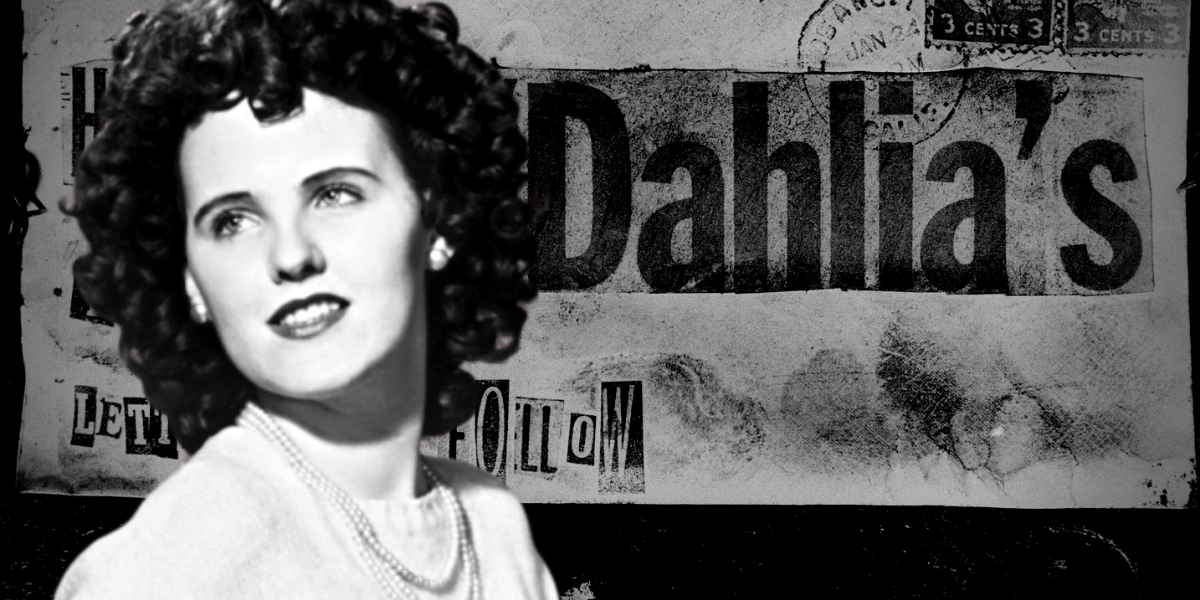Overview of Elizabeth Short
In post-war 1947 Los Angeles, one murder captured the public's imagination and never let go — the death of 22-year-old Elizabeth Short, nicknamed "The Black Dahlia" because of her rumored Gothic appearance of dark hair and attire.

Short's gruesome and unsolved murder has become ingrained as one of Hollywood's most infamous tales.
Who was Elizabeth Short?
Elizabeth’s life was difficult since she was a young girl. Born in 1924 in Hyde Park, Massachusetts, her father, Cleo Short, moved the family around New England frequently, dipping in and out of careers from accounting to mining to real estate ventures. Her mother, Phoebe May Sawyer, was a stay-at-home mother taking care of the five girls. Living through the Depression and World War II, financial security eluded the Short family just when Elizabeth was coming of age in her teens.
Tragically, Elizabeth’s father left in 1930, his car was found abandoned on the Charlestown Bridge. It was assumed that he had taken his own life — but in late 1942, he wrote a letter home to Phoebe, apologizing for deserting the family. He said he was staying in California.
Elizabeth decided to stay with him.
At age 18, Elizabeth moved to Vallejo, California, to live with her father. She had not seen him since she was six — and a lot had changed. They got into frequent arguments, so much so that she moved out within 60 days.
During World War II, Elizabeth took a job at Camp Cooke. She had aspirations and charm, but steady work never seemed to quite materialize.
In the mid-1940s, Elizabeth bounced around Miami, Palm Beach and Los Angeles, periodically visiting ex-boyfriends now out west as she tried unsuccessfully to break into modeling or acting. In 1943, Elizabeth was arrested in Santa Barbara for underage drinking.

No one could imagine that the fingerprints she gave authorities that September 23, 1943 night would be the only information available to identify her after her murder five years later.
1947
On January 9, 1947, Elizabeth was last seen returning to her home in Los Angeles after a brief trip to San Diego with Robert "Red" Manley, a 25-year-old married salesman she had been dating. She reportedly had a meal with one of her sisters who was visiting from Boston, and was also seen at a Cocktail Lounge.
She wasn’t seen again until her body was discovered by Betty Bersinger, a mother, and her young daughter, on the morning of January 15, 1947. At first, she thought the body was a mannequin because of the near-total lack of blood. When she realized the horror, the witness went to the nearest home to use the phone to call the police.
What happened to the ‘Black Dahlia’?
The crime scene was absolutely horrific.
Elizabeth’s severely brutalized nude body had been cut clean in half and drained entirely of blood, meticulously scrubbed clean.
Her body being cut in half was performed in what’s called a hemicorporectomy. This is a specific way to sever the top of someone’s body with the lower half with the least amount of damage. People with life-threatening conditions involving the lower half of their body would have this procedure performed to save their lives.
Marks on Elizabeth's body indicated she was tied up at some point — details made even more macabre as they were eagerly reported by the media before police had a chance to keep information close to the chest.
Most terrifying, Elizabeth’s face had been damaged; her smile cut to create a “Glasgow smile.”
The display of the body, and lack of forensic evidence, sparked theories of a psychotic killer and connections to similar crimes like Cleveland’s Torso Murderer, though none were confirmed.
Red was questioned by investigators, and put through a polygraph test, which he passed. He helped the police identify Elizabeth by looking at her personal belongings. Ultimately, Elizabeth was positively identified because of her fingerprints.

Lack of Leads
Over 150 suspects emerged — men Elizabeth was last seen with, police officials, nightclub owners, businessmen in L.A.’s seedy underworld, and those simply known to the vacant lot area.
Detectives chased down numerous leads that often circled back to dead ends.
The two suspects that many in online forums often point to are George Hodel, and Dr. George Knowlton.
To this day the sadistic murder remains unsolved, the identity of Short’s killer a mystery hidden in the glitz and shadows of Hollywood’s golden era.





